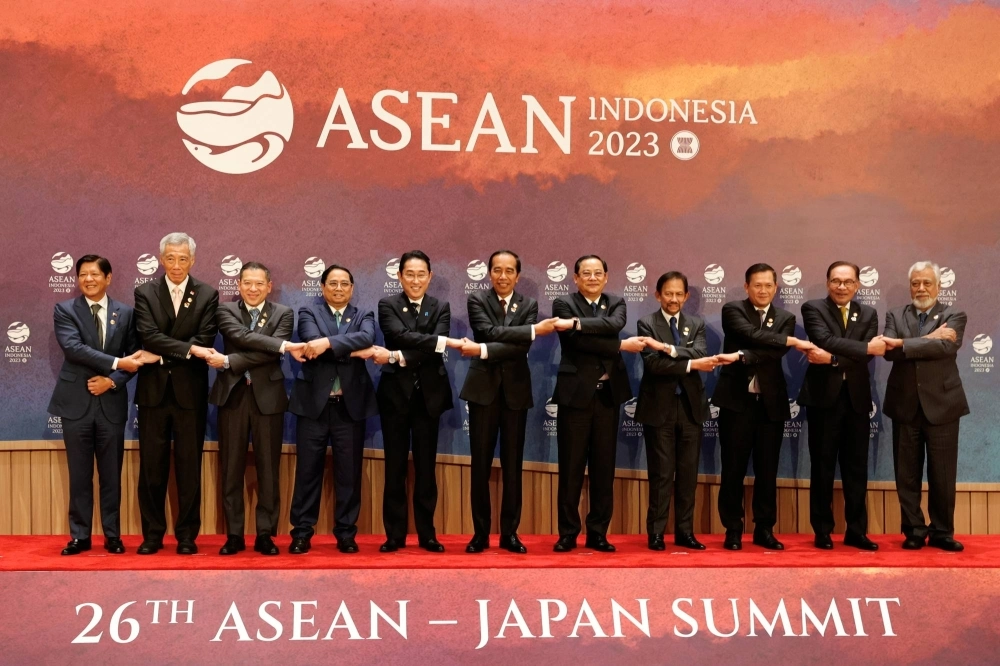Japan and the Association of Southeast Asian Nations (ASEAN) plan to unveil a “new vision” for cooperation when their leaders meet in Tokyo this weekend for a commemorative gathering as Japan seeks to align the 10-member bloc with its strategy for a “Free and Open Indo-Pacific,” amid concerns over China's growing assertiveness.
The three-day special leaders’ summit, meant to mark 50 years of bilateral relations, will see the two sides launch a wide range of cooperation initiatives in the diplomatic, security, economic, cultural and social fields.
Co-chaired by Prime Minister Fumio Kishida and Indonesian President Joko Widodo, the gathering is expected to result in both a joint statement and an implementation plan underlining three main cooperation pillars: Regional peace and stability, people-to-people exchanges and the “co-creation” of a future economy and society, the latter of which will prioritize areas such as supply chains, sustainability, digitization and renewable energies.

















With your current subscription plan you can comment on stories. However, before writing your first comment, please create a display name in the Profile section of your subscriber account page.